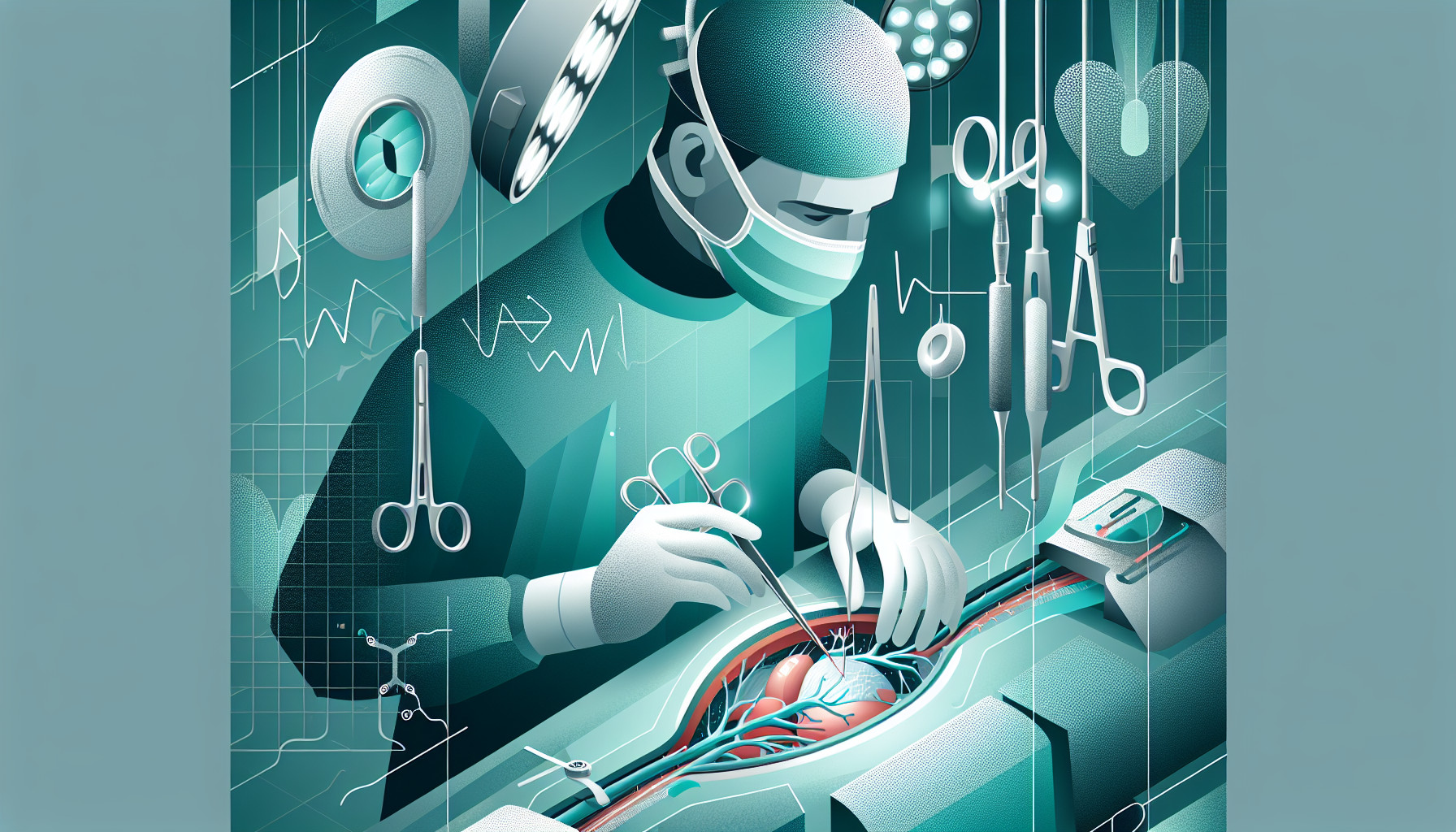Our Summary
This study looked at ways to improve the success rate of arteriovenous fistula maturation, which is a process to prepare a patient’s blood vessels for hemodialysis, a treatment for kidney failure. In this procedure, a patient’s artery and vein are connected to allow the vein to grow larger and stronger, but it often fails, especially if the patient’s veins are not large enough.
The researchers proposed a new approach: treating the vein with a special device and a light-activated molecule before the procedure. The device, a balloon catheter, was coated with a molecule that, when activated by light, creates new bonds in the vein wall’s proteins, helping it to become larger and stronger.
In tests on sheep, the treated veins were significantly larger than untreated veins after a week, and they had more growth of certain cells that help strengthen the vein. The treated veins also didn’t show signs of intimal hyperplasia, an overgrowth of tissue that can block blood vessels and cause the procedure to fail.
The researchers also tested the procedure on human veins and found that they could be stretched up to 66% more than their original size without causing significant damage. This suggests that the treatment could be used safely in humans, but more testing is needed.
FAQs
- What is the new approach proposed by researchers to improve the arteriovenous fistula maturation success rate?
- What was the outcome of the procedure when tested on sheep and human veins?
- What is the role of the special device and light-activated molecule in the proposed treatment for improving arteriovenous fistula maturation?
Doctor’s Tip
A helpful tip that a doctor might give a patient about AV fistula creation is to follow any pre-procedure instructions carefully, such as avoiding certain medications or foods that may interfere with the procedure. It is also important to keep the area clean and dry to prevent infection, and to follow up with regular appointments to monitor the fistula’s progress. Additionally, maintaining good overall health, including a healthy diet and regular exercise, can help support the success of the AV fistula creation.
Suitable For
Patients who are typically recommended for AV fistula creation are those with kidney failure who require regular hemodialysis treatments. These patients usually have poor kidney function and need a reliable access point for the dialysis machine to filter their blood. AV fistulas are considered the best long-term option for hemodialysis access due to their durability and lower risk of infection compared to other types of access.
Patients who have veins that are large enough and in good condition are ideal candidates for AV fistula creation. However, patients with small or weak veins may require additional interventions to prepare their blood vessels for the procedure, such as the new approach proposed in the study mentioned above.
Overall, patients recommended for AV fistula creation are those who are expected to undergo long-term hemodialysis and have suitable veins for the procedure. Additional interventions may be considered for patients with challenging vein conditions to improve the success rate of arteriovenous fistula maturation.
Timeline
- Before AV fistula creation:
- Patient is diagnosed with kidney failure and requires hemodialysis.
- Patient undergoes evaluation and assessment for AV fistula creation, including imaging studies to determine vein size and suitability for the procedure.
- Patient receives education on the procedure, potential risks and benefits, and post-operative care.
- Surgical team plans and prepares for the AV fistula creation procedure.
- After AV fistula creation:
- Patient undergoes the AV fistula creation procedure, which involves connecting an artery and vein to create a larger, stronger vessel for hemodialysis access.
- Patient is monitored closely in the immediate post-operative period for any complications or signs of infection.
- Patient is educated on caring for the AV fistula, including how to monitor for signs of infection or clotting, and how to protect the fistula from injury.
- Over the following weeks and months, the patient’s AV fistula matures, with the vein growing larger and stronger to support hemodialysis treatments.
- Once the AV fistula is deemed mature and ready for use, the patient can begin hemodialysis treatments through the fistula.
- Patient continues to receive ongoing care and monitoring of the AV fistula to ensure its continued function and health.
What to Ask Your Doctor
- What is an arteriovenous fistula and why is it necessary for hemodialysis?
- What are the risks and benefits of arteriovenous fistula creation?
- How successful is the traditional approach to arteriovenous fistula creation, and what are the reasons for failure?
- Can you explain the new approach involving the balloon catheter and light-activated molecule in more detail?
- What are the expected outcomes of using the new approach compared to traditional methods?
- Are there any specific criteria or conditions that would make a patient ineligible for this new procedure?
- What is the timeline for recovery and maturation of the arteriovenous fistula using this new approach?
- What follow-up care or monitoring will be required after the procedure?
- Are there any potential complications or side effects associated with the new treatment method?
- Are there any ongoing clinical trials or research studies related to arteriovenous fistula creation that I should be aware of?
Reference
Authors: He Y, Anderson B, Hu Q, Hayes RB, Huff K, Isaacson J, Warner KS, Hauser H, Greenberg M, Chandra V, Kauser K, Berceli SA. Journal: Int J Mol Sci. 2023 Apr 20;24(8):7571. doi: 10.3390/ijms24087571. PMID: 37108733
